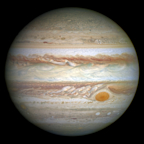Search results
Dec 26, 2014 · The same applies to the beams of light above them. The Sun is very far away and the beams are pretty much parallel, but they're pointing towards you, and perspective makes them appear to converge towards the vanishing point - which in this case is the Sun's location in the sky. The technical term for these beams is "crepuscular rays."
0. If you want your eyes to receive 32000~100000lux, you need to stare at the sun in a sunny day.If you stare at the ground in a sun-exposure area, your eyes receives much less than 32000 lux. If you stare at a shedded ground in a sunny day, your eyes receive slight less than 10000lux. human eyes could not tolerate 32000lux more than 5 secounds.
Feb 15, 2011 · Another way of calculating the earth - sun distance is to look at the centrifugal and the gravitational force. This solution assumes that one already knows the mass of the sun, but thats a different problem ;-).
Mar 10, 2020 · Now the Sun loses a small amount of mass. The Earth is still traveling at the same velocity, and requires the same centripetal force to maintain the same circular orbit. Unfortunately, the reduced mass of the Sun no longer supplies the required centripetal force. So the Earth is now in a slightly elliptical orbit, passing perihelion.
May 3, 2020 · Note that every moon with diameter i will block the sun in 201-i different orbits. The smallest moon will block the sun in only one orbit, LEO. The probability of a moon 2000 miles in diameter is thus $\frac{1}{200^2}$ that of the smallest moon. Then the probability that a moon will block the sun is:
But in Gerthsen Kneser Vogel there is an exercise where Sherlock Holmes estimated the temperature of the sun only knowing the root of the fraction of D and R. Lets say, he estimated this fraction to 225, so the square root is about 15, how does he come to 6000 K ?
Nov 26, 2014 · 13. The Sun does not rise, it is the horizon that goes down. You say that Sun rises in the East (with a certain degree of oscillations due to the tilt of the axis) just because the Earth spins from West to East. The revolution affects the difference between sidereal time and solar time, and makes the solar day ≈ 4 ≈ 4 minutes longer.
Apr 17, 2015 · If we assume the Sun orbits the Earth, the math says that the Sun should be much less massive than the Earth. If we assume the Earth orbits the Sun, the opposite is true. Either way we can get an estimate of the mass of the Sun. We know from other tests that the Sun is more massive than the Earth, so therefore the Earth orbits the Sun.
The solar core is much hotter and at a pretty high pressure. You'd expect that of the core of a nuclear fusion reactor that size. Typical melting point of steel: 1370 C. Melting point of tungsten: 3400 C. Temperature of photosphere: 6000 C. Temperature of Sun's core: 15000000 C. Pressure in Sun's core: 4000000000000 psi. Share.
Feb 16, 2019 · There only (real) force acting on the Earth is gravity, and it explains why the Earth is accelerating toward the Sun. When an object moves in a circle, like the Earth approximately does, it is in fact accelerating toward the center even though it isn’t moving toward the center. This is because acceleration is the rate of change of the ...



















